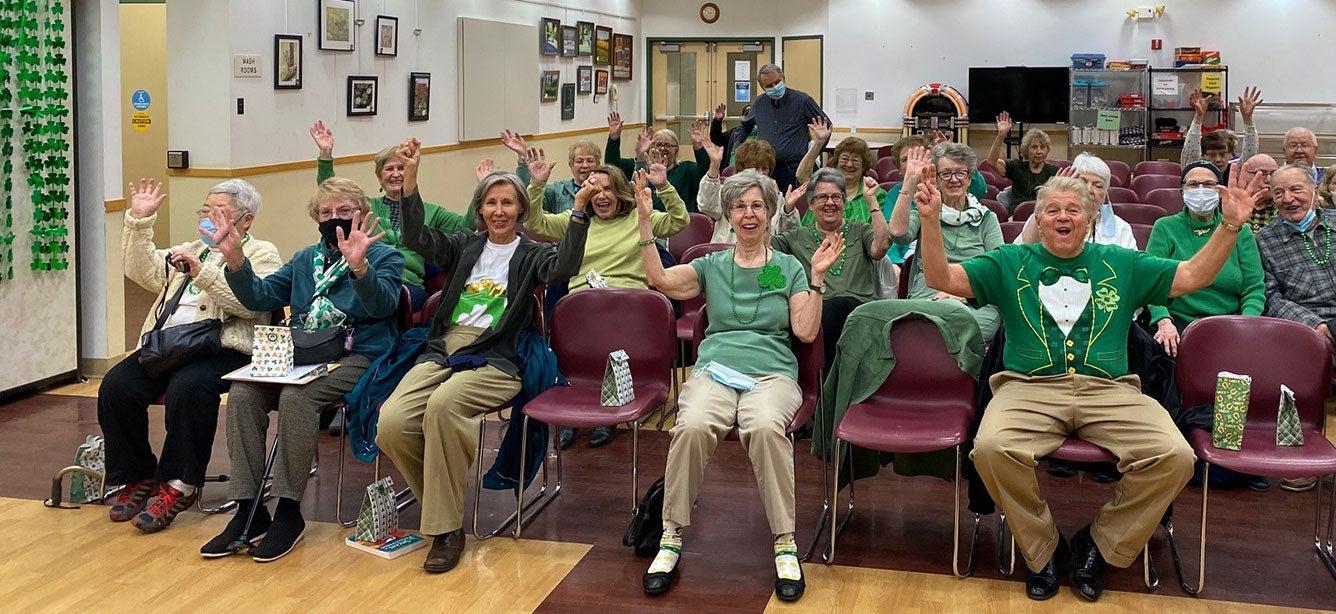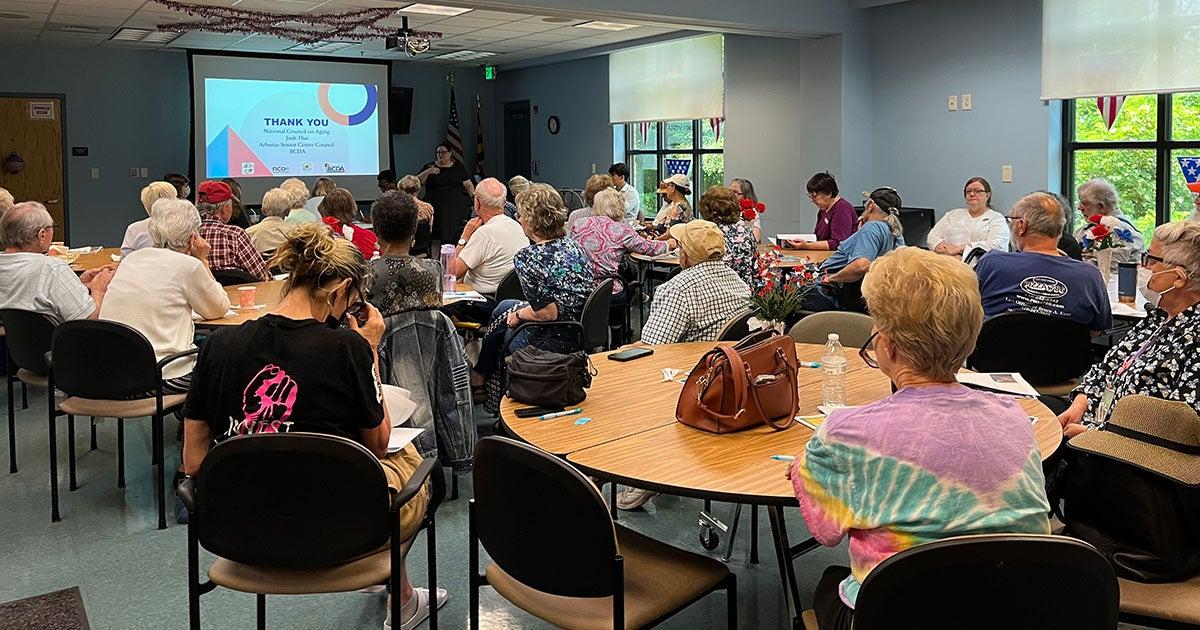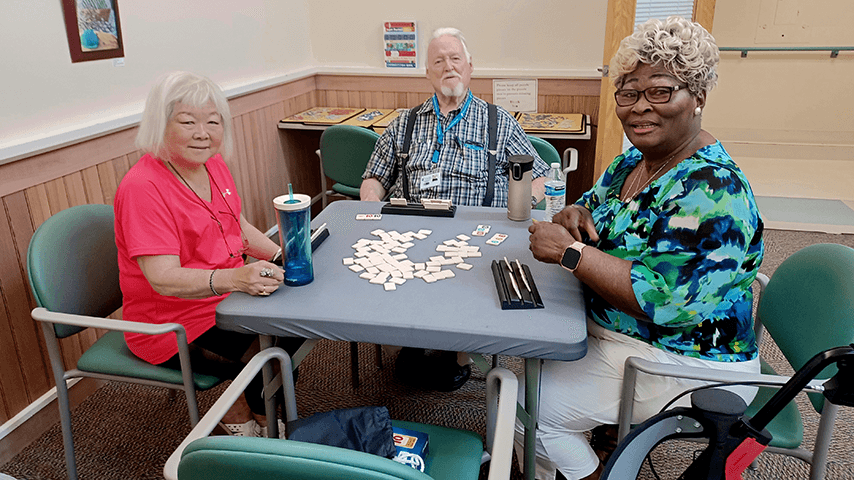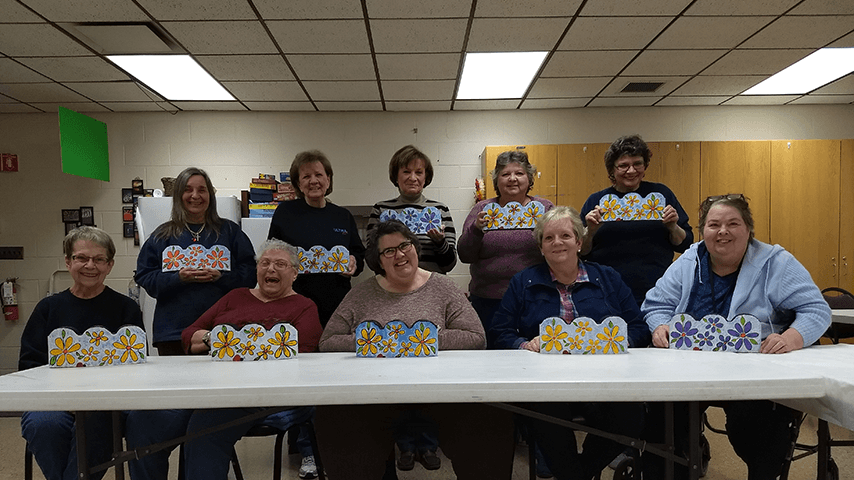Senior Center Spotlight: Arlington Heights Senior Center Showcases Cooperation
5 min read

Senior centers are uniquely positioned to coordinate service delivery with other agencies, mobilize resources and develop ways to expand services and activities. And one such center in Illinois shows how to work as a "one-stop shop" for the area's adults age 55 and older.
That was the idea behind 1978 amendments to the Older American Act (OAA) that introduced the concept of the community focal point, simplifying access to programs and services through collocation, and creating an identifiable place for older people to come together, receive services, and develop skills. Senior centers have taken on that role since their inception. The National Institute of Senior Centers (NISC) Standards of Excellence point out that cooperative planning among community service agencies provides an effective and efficient framework. In other words, collaboration is key.
The Arlington Heights Senior Center, nationally accredited since 2008, is a prime example of this type of collaboration. On a recent visit to Chicago, NISC toured the center and met with Center Manager Tracey Colagrossi, current chair of NISC’s Executive Committee.
Why was the Arlington Heights Senior Center (AHSC) established?
The Arlington Heights Senior Center (AHSC) began as the Park Place Senior Center in 1982 in a 29,000 square foot former grade school building. Owned by the Village of Arlington Heights (VAH), an upper-middle-class suburb northwest of Chicago, the senior center operates as a division of the Village's Health & Human Services Department. A study of the needs of older adults in the community prompted a 1997 move to its current home—a 42,000 square foot retail space in a busy strip mall—and ushered in a new era for the senior center.
To understand a senior center, it’s important to understand the landscape in which it operates. AHSC is part of local government. Within the Village structure, different governing entities include the Village, the Park District (recreation), and the library, and the state contracts with Catholic Charities to provide care coordination and social services locally. While this arrangement has the makings for a fragmented system, coordination is where Arlington Heights shines. While the VAH operates the Center, all the other entities have leased space and operate independently within the facility:
- A library with stacks, lending, activities, and a computer room
- A Parks District office where older adults can register for and participate in recreation programs
- Catholic Charities Senior Social Services and Nutrition Services
- Nurses Club Lending Closet
- Connections to Care (nonprofit volunteer medical transportation services)
- Northwest Community Healthcare
- Village Services
The result: a one-stop shop, where people can find every kind of service they need to age well within the community.
Who goes to AHSC?
The AHSC is open to anyone aged 55 or older regardless of residency. Prior to the pandemic, up to 600 people would come through the doors each day, with almost 135,000 visits annually. The demographics of the patrons is like that of many centers, with most participants between 73-83 years old, 34% male, 56% female. The number of people visiting the center are slowly increasing again, and Colagrossi noted that they are seeing many new people coming to check out the center's offerings.
What do older adults do at AHSC?
The center’s motto is “Live Well, Age Well.” Opportunities at AHSC abound for information and engagement in programs, services, and activities to address overall well-being, financial well-being, physical health, mental health, social support, and spiritual well-being. The programs reflect the fact that so many patrons come with a large variety of interests; woodworking, visual arts, lifelong learning, book discussions, current events, dance, fitness classes, lunches, Mah Jongg, Wii bowling, poker, billiards, canasta, Italian language, and so much more.
The center opens at 8 a.m. Monday through Friday and Saturdays. Closing time is 4:30 p.m. Tuesdays, Thursdays, and Fridays, 8 p.m. Mondays and Wednesdays, and 12:30 p.m. on Saturdays. Patrons can access nutrition (both congregate and home-delivered meals), and social services, such as a case coordination unit, medical and dental transportation, SHIP, Tax-Aide, computer classes, Memory Café, and brain enrichment programs. Amenities include a billiards room, a computer lab, a reading room, an athletic club, clinic, and woodshop.
How has the COVID-19 pandemic impacted the Arlington Heights Senior Center (AHSC)?
Like all centers, the AHSC closed to in-person activities in March 2020. The center continued to engage their patrons through newsletters promoting their virtual lifelong learning programs, art programs, and informational resources. In June 2020, limited in-person programs began, following CDC protocols for pre-registered opportunities only. In July 2021, the center opened fully to drop in-visits. The center announced all their modifications through the Village website, created a new database and outreach email blasts, and acquired MySeniorCenter through their foundation to use voicemail/text and emails to announce new programs and services.
What does "modernizing" mean to AHSC?
To many observers, the AHSC is a modern senior center today— a fun, exciting place where people want to be. According to Colagrossi, a modern senior center must have relevant, fun, and inviting programs. AHSC offers that. The challenge, though, for ALL senior centers, is that the population continuously changes, and so do the needs of the community and the interests of patrons. Senior centers must continually reinvent themselves, evolving with those changes, to stay modern.
What’s next for AHSC?
In 2021, the Village of Arlington Heights commissioned a Space Utilization, Modernization, Program Plan study for the future of the Arlington Heights Senior Center. Recommendations for an updated senior center were created through presentations on senior centers, focus groups, and surveys. A design team made recommendations that included places to offer cooking classes, a virtual reality space for gaming, small conference room spaces for group discussions and classes, outdoor pickleball spaces, and an updated café for attractive menu choices.
Regardless of whether a remodel happens, the vibrancy and relevancy in the current and robust program offerings will attract the future patron. Therefore, the senior center must continually reinvent itself to stay current in the residents' minds that use it, along with stellar customer service and hospitality that treats each patron with respect and dignity.
Still not a member of the National Institute for Senior Centers? Join today, membership is free.
If your center has engaged in a recent study or assessment, we’d love to hear about it. And if you haven't already, we'd encourage you to join the National Institute of Senior Centers (NISC). Free to all senior centers (and their personnel), NISC supports senior centers with best practices and innovations in programming, as well as networking and training opportunities. Ask for help, leverage NISC resources, or share your successes like the Arlington Heights Senior Center (AHSC). Find out how you can become a NISC Affiliate today.



